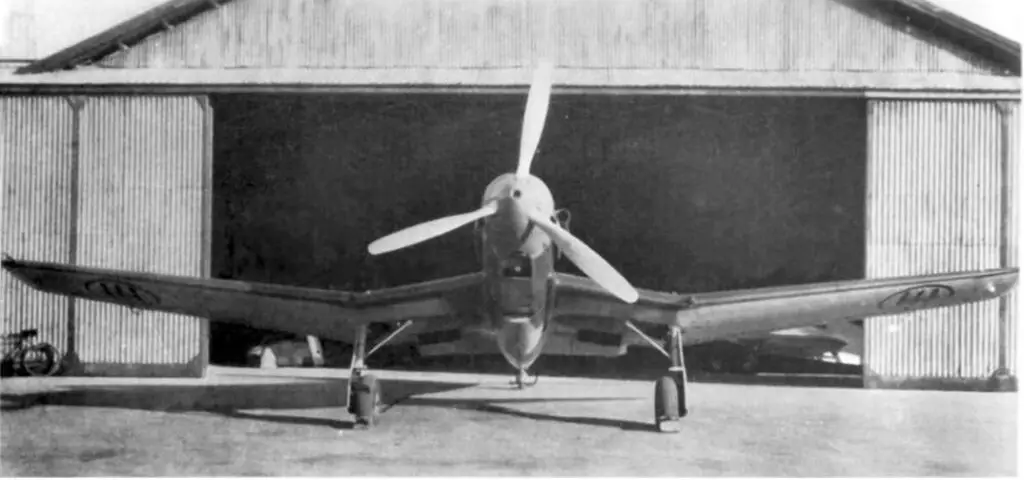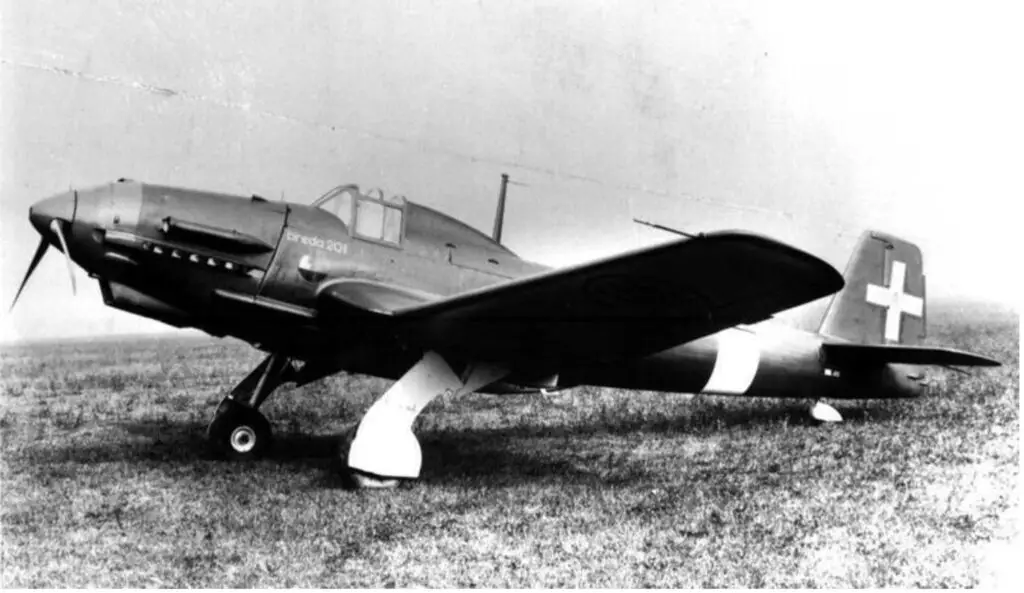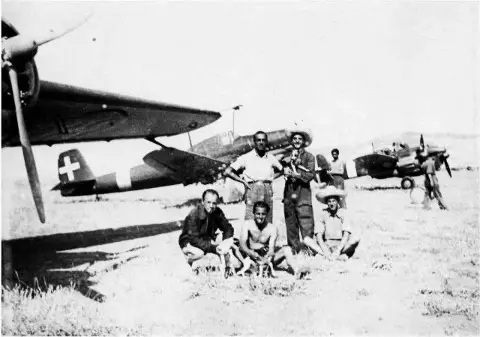In 1939, when Europe was rapidly descending into war, and the various air forces were upgrading their aircraft, the Italian air force was lagging on several aspects, in particular, it lacked a decent ground attack aircraft, capable of dive-bombing. The Breda Ba. 65 was a decent ground-attack machine but unfit for dive-bombing, while the S.M. 85, specifically designed for that role, was full of issues and design flaws.
In August 1939, the General Staff of the Regia Aeronautica issued the requirements for the adoption of a new monoplane dive-bomber model, having a single-engine and single-seat.
The Breda company, after the not exalting Ba.65 and the disappointment of the Ba. 88, committed serious efforts in this new procurement, trying to redeem the company in the aviation sector. The working group set up around the engineers Vittorio Calderini and Mario Pittoni designed an interesting aircraft, called Breda Ba.201
While being influenced by the design of the German Ju-87, the Breda technicians retained only the “gull-wing” feature and added completely new elements. Besides being a single-seat aircraft, the bombload was stored inside a ventral gondola, and the landing gears were retractable. This last feature was bold since the stabilization during the dive would have been granted only by the gull wing. On the Stukas, for instance, the bulky fixed gears were also contributing to the stabilization of the aircraft while diving.

Given the difficulties of the Italian industry in developing powerful aircraft engines, the choice fell on the German-built Daimler-Benz DB.601 with 1.175 hp.
On the 28th of May 1941, Marshal Luigi Acerbi left his 209th Squadriglia (of Ju.87) and took charge of the Experimental Center of Guidonia. For his excellent qualities as a pilot and the operational experience acquired, he was assigned to the Breda company for testing the new Ba. 201. The first flight of the prototype (MM.451) took place on the afternoon of July 3rd, 1941, and by September 25, 1941, Acerbi had reached a flight time of 13 hours and 30 minutes during 34 tests. On 26th September the plane is examined by the gen. Mario Bernasconi and then Acerbi performed another demonstration of the aircraft capabilities.

In October, Acerbi performed further tests, specifically: measurement of climb and speed at altitude (October 17) minimum speed (20th October), dive (24-25-28th October), maximum speed (29th October). From the start, the Ba.201 proved to be a successful aircraft. The wing provided excellent stability and the aerodynamic brakes prove to be so effective that only their partial opening was sufficient in operational conditions. This was instrumental to not causing a too slow descent which would facilitate enemy anti-aircraft fire.

On the first of November, Acerbi brings the Ba. 201 to the base of Lonate Pozzolo, home of the Dive-bomber training unit of the Regia Aeronautica. The flights of the Ba.201 (MM.451) resumed on the 20th of January 1942 and exactly one month later Acerbi carried out 4 bomb drops over the testing ground of the base. Acerbi then flew back to the Breda testing airfield where he used to test the M.C.202 fighters coming out of the Breda factory. Here Acerbi often met the pilots who had come to collect their brand-new MC.202. This gave birth to fake duels and hunts, during which the Ba.201 usually deep-dived followed by the Macchi aircraft. At this point, the extraction of the airbrakes stopped the Ba.201 to such an extent that the MC.202s surpassed the dive bomber, finding it at their back. The evaluation phase concluded that the Ba.201 was a very manoeuvrable aircraft, perfectly fit for the role of the dive bomber.
However, the production of this excellent aircraft never started, essentially because of the lack of the DB 601 engines. Such engines were produced in limited quantities (under license) by the Italian industry, and they were entirely absorbed by the fighter production (almost exclusively by the M.C.202).
| Model | Breda B.A. 201 |
|---|---|
| Crew | 1 |
| Powerplant | (1) Daimler-Benz DB 601A V-12 inverted liquid-cooled piston engine, 867 kW (1,163 hp) |
| Maximum Speed | 290 mph (460 km/h) at 13,123 ft (4,000 m) |
| Max Ceiling | No clear data on that |
| Range | 750 miles (1200 km) |
| Length | 36.5 ft (11.09 m) |
| Height | 10.2 ft (3.1 m) |
| Weight | Empty: 5,247 lb (2,380 kg) Max: 8,047 lb (3,650 kg) |
| Wing Area | 267 Sq ft (24.84 m2) |
| Wingspan | 42.8 ft (13 m) |
| Armament | (2) 12.7 mm Breda SAFAT machine gun Bomb Load up to 1,102 lbs (500 kg) |
Sources
B.A. 201. (2013). From Aerei Militari: https://www.aereimilitari.org/forum/topic/17522-breda-ba201/
Lembo, D. (1999). I tuffatori della Regia. Aerei nella Storia , 30-38.